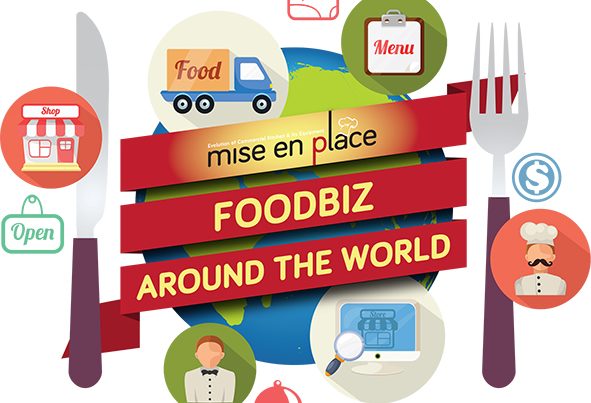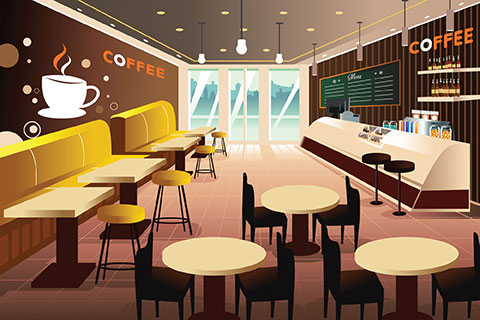
Ready to share your love for coffee and the art of making a memorable cup of java to the world? According to Goh CW, Manager & Coffee Consultant (Chief Barista) of Universita Del Caffe(UDC), cafe owners need to know their direction on whether they want to focus on coffee or restaurant first, coffee secondary. Assuming one is setting up a beverageled operation, it is crucial to realise just coffee knowledge will not take you far and neither is a barista (whether the owner is the barista or hiring one) there to “just make coffee” but is responsible for the management of the bar and customer service. Sounds like common sense that we almost feel like we’re a broken record but like Goh said; the percentage of people who are serious coffee drinkers aren’t high, in Malaysia, at least, and if another place serves a cup of decent coffee with excellent ser vice, people would go there. On top of that, there is a good crowd who does not drink coffee and he adds that owners would do well to keep an open mind and expand their beverage menu and offer creative takes to conventions such as infusing local ingredients into Western teas, which is becoming quite a trend. Under Classic Fine Foods (the holding company of UDC), there is a team that looks into creating new beverages and offer menu consultation services according to the business’ direction. Therefore, what are the aspects to look into when setting up a outlet with a compact food menu?
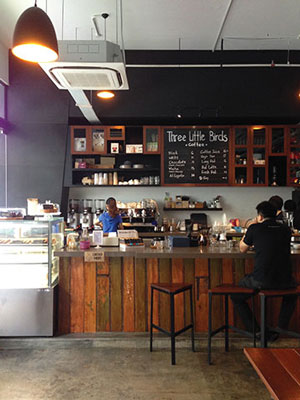 SHOP SIZE AND LOCATION
SHOP SIZE AND LOCATION
Assuming you’re not planning to fit out a kitchen, maybe you could go with a smaller sized lot, either an upstairs lot or a half shop. This might assist in mitigating rental prices if you want to be in a visible and popular location. Perhaps most cafes in that location are made for lingering and has a full menu yet some customers could prefer something quick and simple; which is where you can come in. For trivia’s sake, citizens in Florence make coffeeshops a quick exchange. Its a matter of zipping into the shop, order and pay, stand and take the drink in one-two gulps and off they go. Hence shops aren’t huge and are very specific in their offerings. Sometimes, a smaller space can give an impression of a crowd which can help create intrigue amongst passersby to give your place a go.
Compare this outlook to a full shop which had only a few customers sipping coffee because it does not serve full meals and also had a minimum selection of light meals and cakes (this is a true story). Although at a high traffic area, the crowd was sparse. Yes, we know that people do not drink coffee ever y hour but if you are prioritising visibility over food then shrinking the space can be a way to be more cost effective.
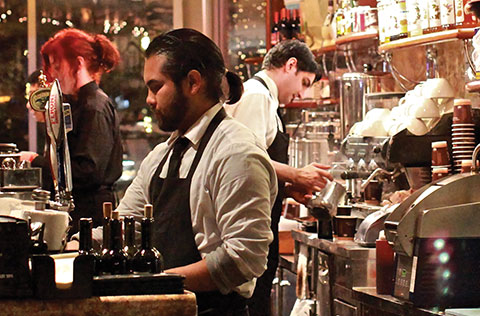
THE WORK STATION
If you have experienced standing in line for a long time yet there aren’t actually many people in line, a poorly planned workflow could be the reason. Having said that, this should not be seen in the same light as the above mentioned smaller space as a smart planner should be able to design the most efficient workflow according to the size allocated. Theoretically it is common sense – customer walks in, makes an order , grabs a pastry (or not), pays at the cashier and picks up the drink. Should the order and pick-up be at the same place, it would create a bottleneck when the waiting time can be utilised for payment. Furthermore, bringing a cup of hot drink to the cashier, putting it down and getting money out – all these take up unnecessary time and increases risk of spilling and injury with hot beverages. You want to also plan ahead and make provisions for future expansion such as what is the maximum capacity you want to serve in this outlet because you might need extra equipment going for ward.
Speaking of the work station, bar management is vital for hygiene and also the quality of coffee brewed. Academic Director of Barista Guild Asia, Daniel Liew says that a competent barista will always have separate pieces of cloth to wipe the steam wand and hot water tap before brewing the next cup.
When it comes to getting “ground coffee to liquid gold”, the barista must ensure he / she does not miss a step; which Daniel deftly demonstrated to us:
• Remove the portafilter from grouphead and flush the grouphead
• Knock out the coffee puck
• Grinding and dosing
• Ground distributing and groom
• Tamp (must be level)
• Clean the portafilter to remove excessive coffee ground
• Lock in to grouphead and brew immediately
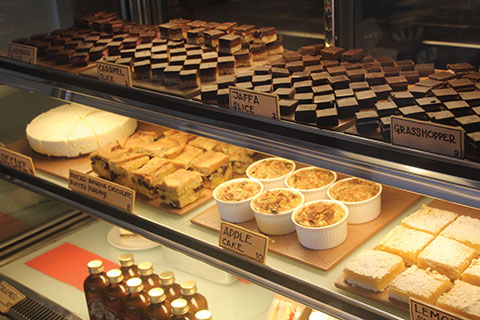
THE EXTENT OF YOUR MENU
Just regular and familiar options of coffee or are you serving items such as freshly pressed juices and /or smoothies? The kind of food you want to serve will impact whether or not a hot food station needs to be fitted in. Typically, beveragecentric outlets keep food to quick-serve items such as sandwiches, pastries and cakes which can be prepared ahead of time and stored in a glass display chiller which require little or no preparation work prior to serving. Menu boards, pastry and cake chillers should be placed within instant visibility to attract customers and entice them to get something extra with their coffee. It is not surprising that some cafes position these items in a blind spot and when the customer actually sees it, they might already be paying and in that split second they are unlikely to make an extra purchase. The power of suggestion can make a difference.
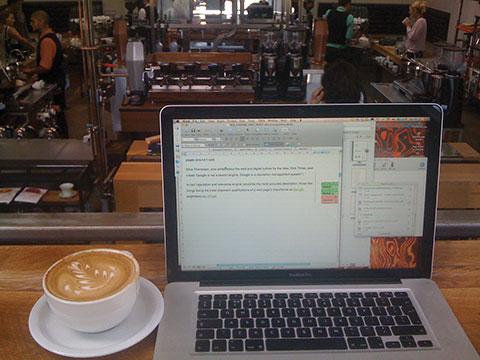
SERVICES
It is almost a given that coffeeshops today are Wi-Fi equipped to draw in the working crowd who want to work out of office. How many plug points will you provide? At every table or just a few? People may also appreciate good lighting to work, practical size and shape of furniture that are ergonomic. Will water be free? Will you limit Wi-Fi usage time? These are little things which we don’t think would be strong enough to stop customers from coming but it would mean a lot to your regular customers.
Joshua Liew, the Co-founder & COO of Espressolab Asia hit the nail on the head when he said customer experience is paramount because many can make a decent cup of coffee and with cafes sprouting like mushrooms; how do you set yourself apart? That’s a question you should first answer before drawing out your cafe plans.
http://www.baristaexchange.com/profiles/blogs/1688216:BlogPost:120427







